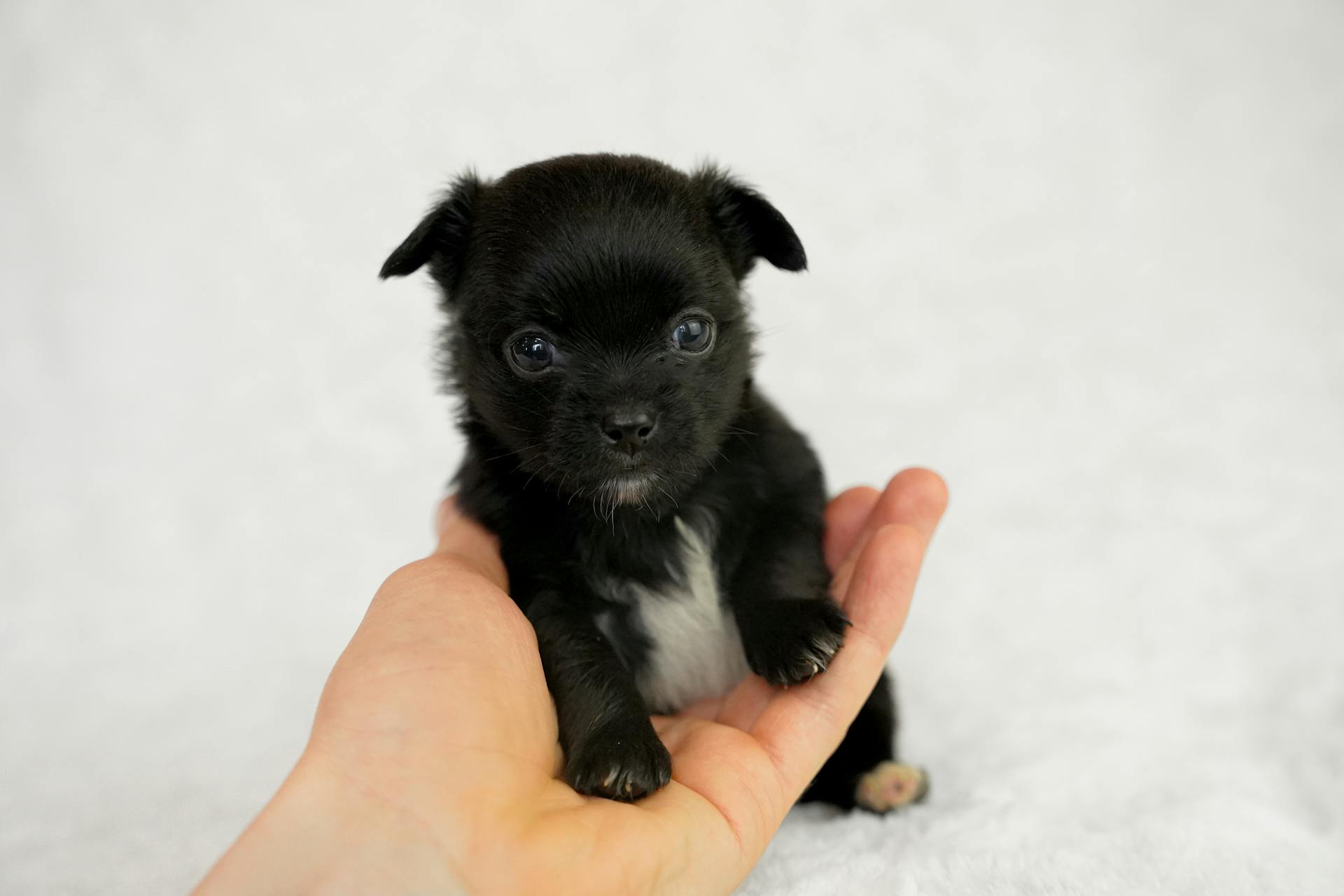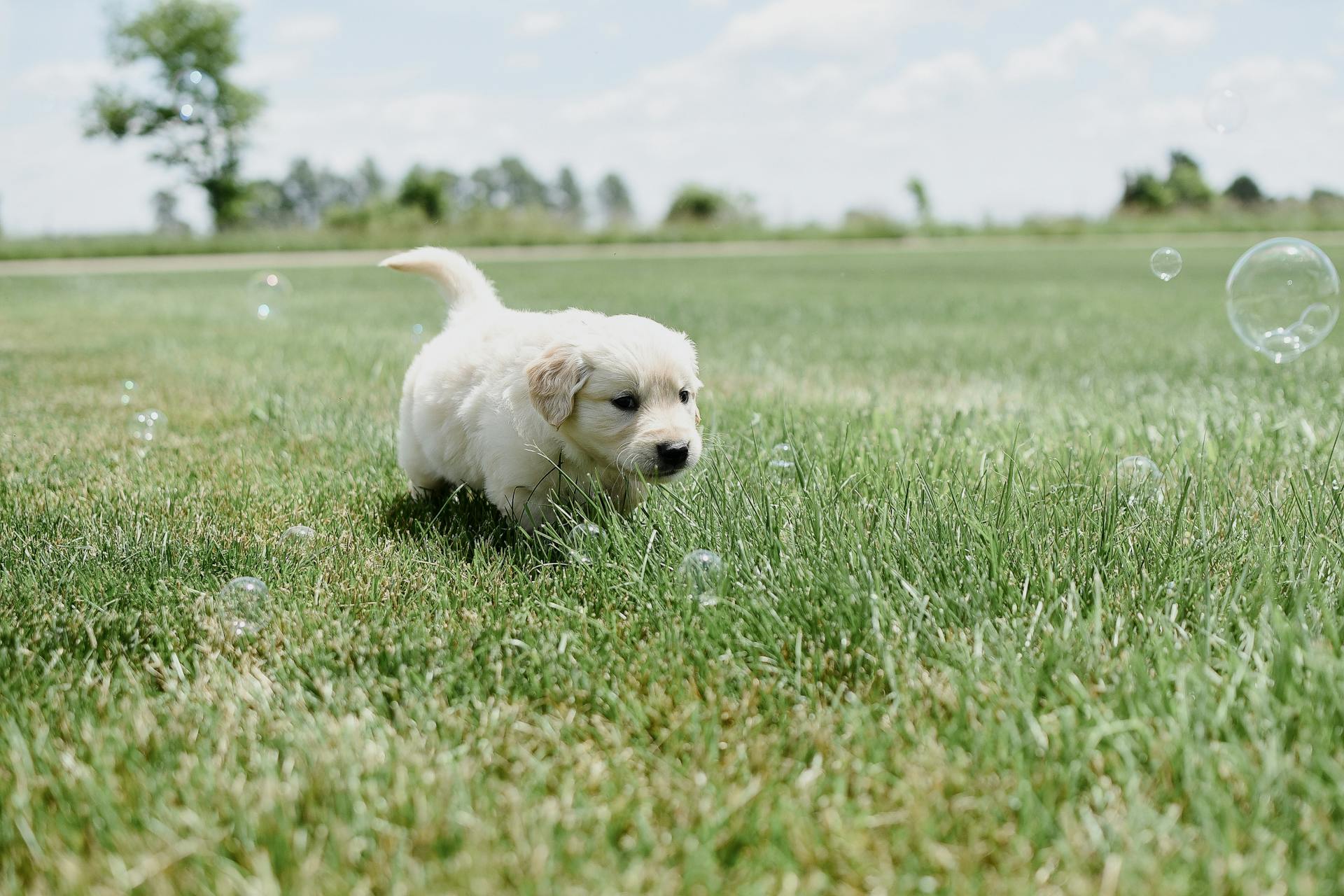
Mastiffs are a popular breed for families, but are they good with kids? The answer is not a simple yes or no. With their gentle giant reputation, many people assume that Mastiffs are perfect for families with children. However, it's essential to consider their temperament, size, and needs before making a decision.
Mastiffs are known for their loyal and loving nature, which makes them great companions for families. However, they do require a lot of attention and exercise, which can be challenging for busy families. According to our research, Mastiffs need at least 30 minutes of exercise per day to stay happy and healthy.
With proper training and socialization, Mastiffs can thrive in families with kids. In fact, Mastiffs are often described as patient and gentle with children, making them a great breed for families. However, it's crucial to remember that Mastiffs are still large dogs and can accidentally knock over a child, so supervision is always necessary.
Mastiff Characteristics
Mastiffs are gentle giants at heart, known for their kind souls and calm demeanor, making them a great fit for families with kids.
Their high affection level means they thrive on human interaction, and they'll shower their family members with love and companionship.
One thing to keep in mind is their high exercise needs, so be prepared to take them on regular walks and playtime.
Mastiffs are also highly playful, which is great for kids who love to run around and play fetch.
Here's a quick rundown of their characteristics:
With proper training and care, mastiffs can be a loving and loyal addition to any family.
Training and Care
Training a mastiff requires careful attention to prevent jumping and leash-pulling, as they can grow to be quite large. Socialization is also crucial to ensure their natural protectiveness is appropriate and they don't become overprotective around visitors.
To socialize a mastiff, you should expose them to various environments and people to help them become confident and calm in new situations. This will help them develop good manners and reduce the likelihood of aggression towards strangers.
Mastiffs are intelligent and adaptable, making them good at learning new skills and mastering various jobs, from guarding to therapy work. However, they do have a strong instinct to chew on things, so providing plenty of durable chew toys is essential to save your furniture.
Training

Training is crucial for mastiffs, especially due to their giant size. Proper training will help prevent jumping and leash-pulling.
Socialization is key to ensure their natural protectiveness is appropriate and they don't become overprotective around visitors. This means exposing them to various people, places, and experiences from an early age.
Careful attention should be given to preventing jumping and leash-pulling. Mastiffs can grow to be quite tall and strong, making it essential to teach them to walk calmly on a leash.
Mastiffs are known to be strong chewers, so providing plenty of durable chew toys is a must to save your furniture. You should also consider dog-proofing your home to prevent any accidents caused by their strong tail or curious nature.
A unique perspective: How to Train English Mastiff
Tips for Bringing Home a Healthy Mastiff Puppy
Bringing home a healthy Mastiff puppy requires some careful planning and research. Consider starting your search for a good breeder at the website of the Mastiff Club of America.
To ensure you're getting a healthy puppy, ask your breeder to show you the results of genetic health testing. All breeders should be able to show written documentation from the Orthopedic Foundation for Animals (OFA) and the Canine Eye Registration Foundation (CERF) clearing your puppy's parents of hip and elbow dysplasia, heart disease, and eye problems.
A reputable breeder will also have PennHip certification of hips and OFA certification of thyroid health. They should also have the results of at least one normal urine test for cystinuria, done by the University of Pennsylvania.
Pay close attention to your potential puppy's temperament. A breeder who has American Temperament Test Society (TT) certification on her dogs is to be preferred over one who does not.
Don't fall for the lies of a bad breeder. If they have excuses for not doing health and temperament testing, walk away.
Consider an adult dog from a shelter or a rescue group if you're not set on getting a puppy. Many young Mastiffs are a handful, and many health defects hide until maturity.
Take your Mastiff to your veterinarian soon after adoption to spot any visible problems. Your veterinarian will work with you to set up a preventive regimen that will help you avoid many health issues.
See what others are reading: Neapolitan Mastiff Health
Here are some important things to look for in a contract with the seller, shelter, or rescue group:
- A clear spelling out of responsibilities on both sides
- Understanding of rights and recourses in states with "puppy lemon laws"
By following these tips, you can bring home a healthy and happy Mastiff puppy.
Keeping Your Mastiff Happy & Healthy
Mastiffs are big and strong dogs, but they still need plenty of exercise to stay healthy. Make sure they're getting regular walks or playtime in the yard each day to keep them physically fit.
Their high exercise needs mean they'll be happy to join you on a daily walk or playtime in the yard. Aim for at least 30 minutes of exercise per day to keep them happy and healthy.
Mastiffs can also be prone to boredom if they don't get enough mental stimulation. To combat this, keep them busy with toys, puzzles, and other interactive activities.
A low trainability level means they might not pick up commands as quickly as other breeds, so be patient and consistent with training.
Their medium energy level means they'll need regular breaks to rest and recharge. Make sure to give them plenty of time to relax and sleep.
Here's a rough guide to their daily needs:
Their kind and gentle nature makes them a great addition to families with children. Just remember to supervise interactions between kids and your Mastiff to ensure everyone's safety.
Adopting or Buying a Mastiff
If you're considering bringing a mastiff into your family, you'll want to explore your options for adopting or buying one.
Pet parents can seek out a specialized breeder or look into local adoption agencies.
You should seek out a reputable breeder with a history of healthy litters and detailed care. They should be able to answer any questions you have regarding the pedigree, health, and history of the litter and parents.
Ideally, you should meet one or both parents to have a better idea of your future pet's personality, size, and temperament.
You can also consider rescuing a mastiff through organizations like The Mastiff Club of America, Mastiffs to Mutts Rescue Inc., or Southern States Mastiff Rescue.
Curious to learn more? Check out: Neapolitan Mastiff Origin
Health and Safety
As a parent, one of the most important things to consider when bringing a new pet into your home is the potential impact on your children. Mastiffs, in particular, are known to be gentle giants, but like any breed, they do come with their own set of health concerns.
Mastiffs are prone to joint and structural problems due to their large size, so it's essential to keep them lean and not over-exercise them, especially when they're young. This will help prevent injuries and structural problems down the road.
Gastric Dilatation Volvulus, also known as bloat, is a serious condition that can be life-threatening if not treated promptly. It's essential to monitor your Mastiff's eating habits and ensure they don't gobble their food too quickly.
Here are some common health issues that can affect Mastiffs, along with their risk profiles and estimated costs to diagnose and treat:
Regular veterinary check-ups, especially for eye exams, are crucial to detect potential problems early on.
Aggression and Behavior
Mastiffs can be intimidating to strangers, but they're not naturally aggressive. They're actually gentle and loving with their family members.
Proper training and socialization from a young age can prevent aggression in Mastiffs. This means supervising them around strangers until you're sure they understand and obey commands.
Mastiffs are also naturally protective of their family, but this doesn't mean they'll defend arbitrary property lines or objects. They need to be part of your family to feel a sense of responsibility to protect.
If you're bringing a new Mastiff into your home with children, introduce them slowly and with supervision to ensure a smooth transition.
A different take: Are Cane Corsos Good Family Dogs
Traits and Behavior
If you're considering bringing a Mastiff into your family, it's essential to understand their unique traits and behavior. They can be gentle and loving, but also have a stubborn streak.
A Mastiff's protective nature is a significant aspect of their behavior, and it's not just about defending territory. They prioritize their family's safety above all else. If you leave a Mastiff tied up in the backyard, you'll likely come home to a bored, lonely, sad, and destructive dog.
Consistent and fair obedience training is crucial for a Mastiff, starting from puppyhood to prevent bad habits from forming. This includes teaching them not to pull on the leash or jump on people, as they can become a hazard to those around them.
Socializing a Mastiff around various people when they're young is vital in developing their proper temperament as an adult. This exposure will help them recognize "good" body language and become more effective protectors.
Mastiffs usually love children and treat them with care, but their large size means they can unintentionally hurt or scare them. Always supervise interactions between dogs and kids, especially with toddlers, and consider waiting until they're older to bring a Mastiff into your family.
A Mastiff's short coat sheds, but regular brushing a couple of times a week can keep it under control. Their slobbering can be managed with a quick wipe after meals or water breaks, but if you're extremely averse to dog slobber, a Mastiff might not be the best fit.
Can Be Aggressive?
Mastiffs aren't naturally aggressive, but they can become so if they aren't raised and trained correctly.
Proper training and socialization from a young age can prevent aggression in Mastiffs. This means supervising them around strangers until they understand and obey commands.
If you're introducing a new Mastiff to children, do it slowly and with supervision to avoid any potential aggression.
General Information
Mastiffs are a great family dog, offering both size and strength to protect children, as well as patience and gentleness to make them wonderful playmates.
They're loyal and affectionate toward their human family members, which means they'll show special attention to your kids.
Mastiffs are intelligent and eager to please, making them easy to train to obey commands from everyone in the family.
Their size can be a concern, as they can easily knock small kids over if they're not careful.
Mastiffs don't mean to knock over kids, they just have a lot of enthusiasm and energy that can be hard to contain.
Their massive size can also make them a bit clumsy.
With proper training and socialization, Mastiffs can make wonderful family dogs.
They're incredibly gentle and understanding when it comes to kids, and can sense when a child needs extra care or comfort.
Expand your knowledge: American Xl Bully Size
Frequently Asked Questions
What is the best Mastiff for kids?
For families with kids, the Spanish Mastiff is an excellent choice due to its calm, gentle, and patient nature. They're particularly good with children, making them a loyal and loving addition to the family.
Is a Mastiff a friendly dog?
Yes, Mastiffs are friendly dogs, especially with family members, but may be more reserved around strangers. They can also make great companions for other pets in the household.
Sources
- https://www.thesprucepets.com/mastiff-dog-breed-profile-1117980
- https://www.embracepetinsurance.com/dog-breeds/mastiff
- https://www.purina.co.uk/find-a-pet/articles/dog-types/breed-guides/best-dog-breeds-for-families
- https://post.bark.co/breeds/english-mastiff-guide/
- https://www.hepper.com/are-mastiffs-good-with-kids/
Featured Images: pexels.com


